Fuel System Overview
The fuel tank stores the fuel supply. The fuel pump module, located in the fuel tank, supplies fuel through the fuel feed pipe to the high pressure fuel pump. The high pressure fuel pump supplies fuel to a variable-pressure fuel rail. Fuel enters the combustion chamber through precision multi-hole fuel injectors. The high pressure fuel pump, fuel rail pressure, fuel injection timing, and injection duration are controlled by the engine control module (ECM).
Fuel Tank
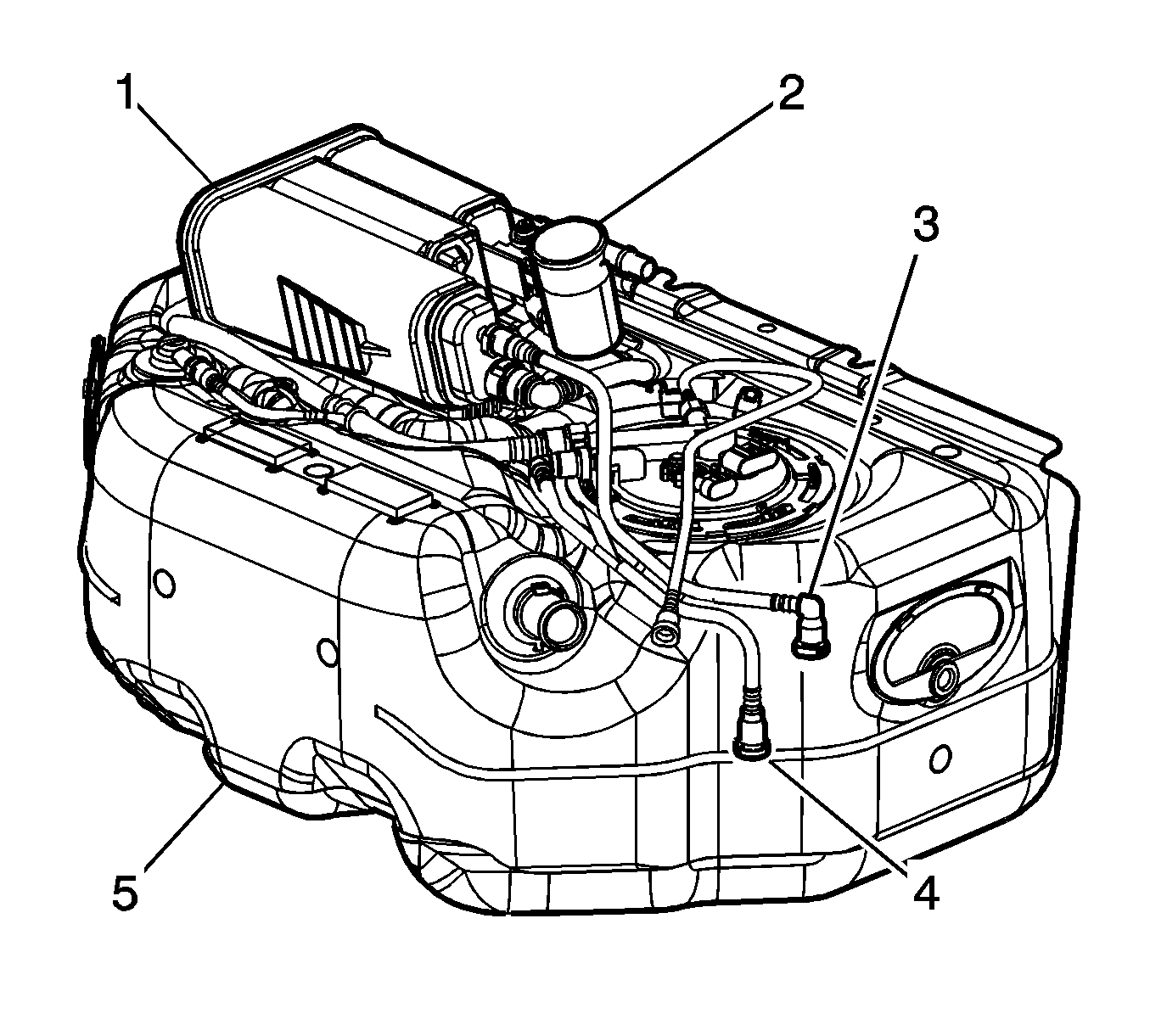
The fuel tank (5) is located in the rear of the vehicle. The fuel tank is held in place by 2 metal straps that attach to the frame. The fuel tank is molded from high-density polyethylene.
Fuel Fill Pipe
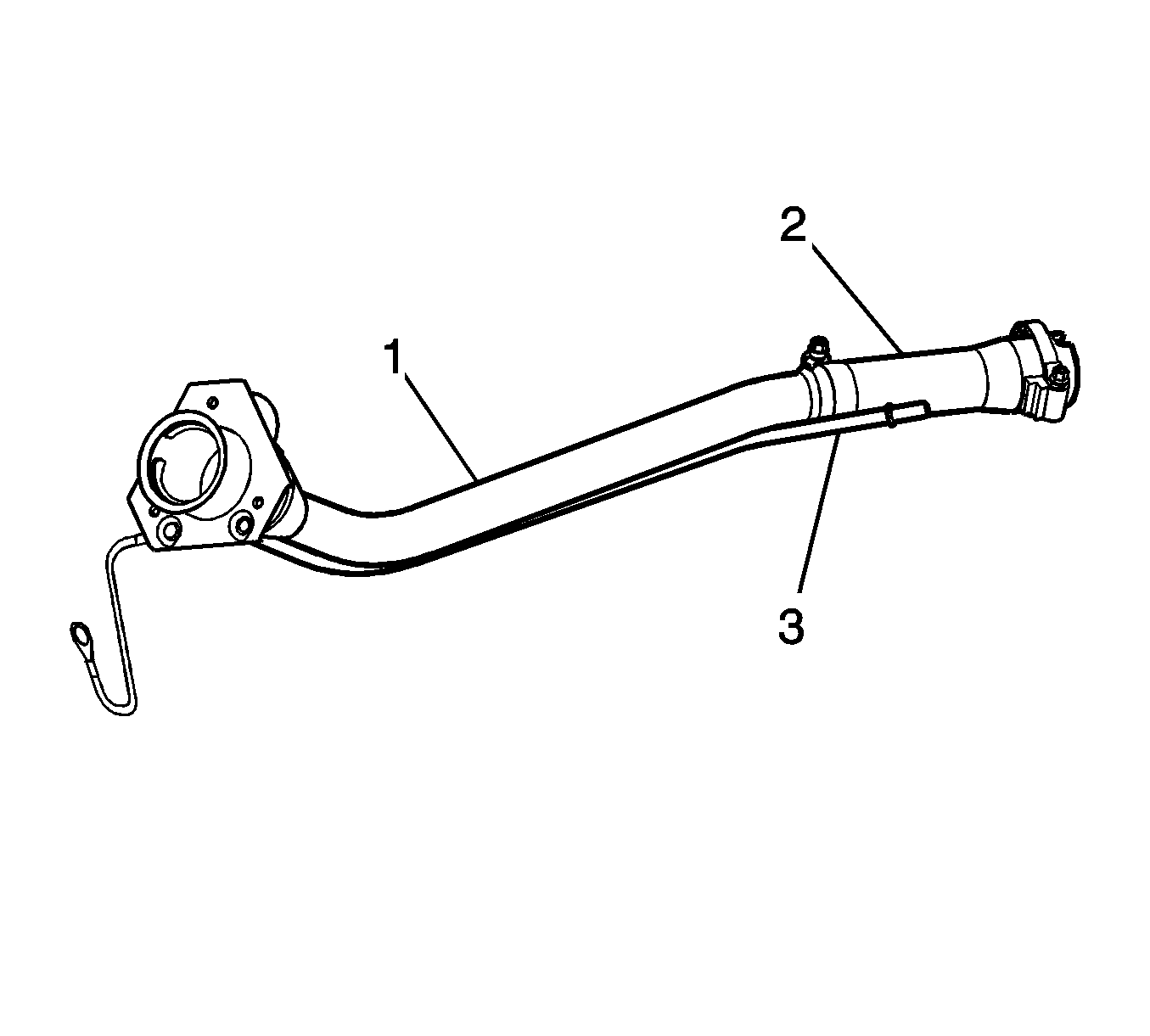
The fuel fill pipe (1) has a built-in restrictor in order to prevent refueling with leaded fuel.
Fuel Filler Cap
Caution: If a fuel tank filler cap requires replacement, use only a fuel tank filler cap with the same features. Failure to use the correct fuel tank filler cap can result in a serious malfunction of the fuel and EVAP system.
The fuel fill pipe has a tethered fuel filler cap. A torque-limiting device prevents the cap from being over-tightened. To install the cap, turn the cap clockwise until you hear audible clicks. This indicates that the cap is correctly torqued and fully seated. A fuel filler cap that is not fully seated may cause a malfunction in the emission system.
Fuel Pump Module
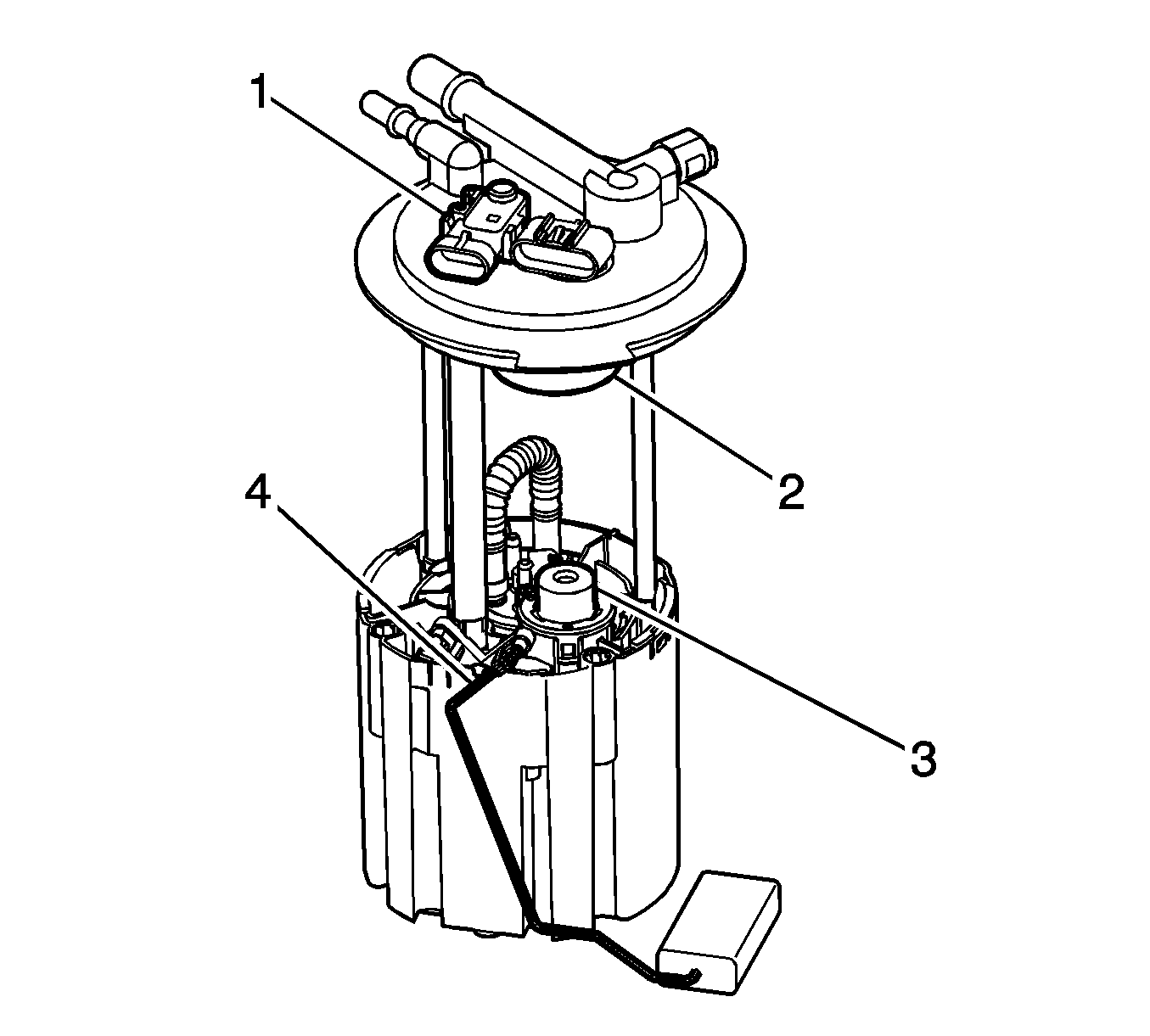
An electric turbine style fuel pump attaches to the fuel pump module inside the fuel tank. The fuel pump supplies fuel through the fuel feed pipe to the high pressure fuel pump. The fuel pump provides fuel at a higher rate of flow than is needed by the high pressure fuel pump. The fuel pressure regulator, a part of the fuel pump module, maintains the correct fuel pressure to the high pressure fuel pump. The fuel pump module contains a reverse flow check valve. The check valve and the fuel pressure regulator maintain fuel pressure in the fuel feed pipe in order to prevent long cranking times.
The fuel pump module consists of the following major components:
| • | The fill limit vent valve (2) |
| • | The fuel level sensor (4) |
| • | The fuel tank pressure (FTP) sensor (1) |
| • | The fuel pump |
| • | The fuel strainer |
| • | The fuel pressure regulator (3) |
Fuel Level Sensor
The fuel level sensor consists of a float, a wire float arm, and a ceramic resistor card. The position of the float arm indicates the fuel level. The fuel level sensor contains a variable resistor which changes resistance in correspondence with the position of the float arm. The engine control module (ECM) sends the fuel level information via the serial data circuit to the body control module (BCM). The BCM sends the message to the instrument panel cluster (IPC). This information is used for the IPC fuel gage and the low fuel warning indicator, if applicable. The ECM also monitors the fuel level input for various diagnostics.
Fuel Pump
The fuel pump is mounted in the fuel pump module reservoir. The fuel pump is an electric pump. Fuel is pumped to the high pressure fuel pump at a specified flow and pressure. The fuel pump delivers a constant flow of fuel even during low fuel conditions and aggressive vehicle maneuvers. The control module controls the electric fuel pump operation through a fuel pump relay. The fuel pump flex pipe acts to dampen the fuel pulses and noise generated by the fuel pump.
Fuel Strainer
The fuel strainer attaches to the lower end of the fuel pump module. The fuel strainer is made of woven plastic. The functions of the fuel strainer are to filter contaminants and to wick fuel. The fuel strainer normally requires no maintenance. Fuel stoppage at this point indicates that the fuel tank contains an abnormal amount of sediment or contamination.
Fuel Pressure Regulator
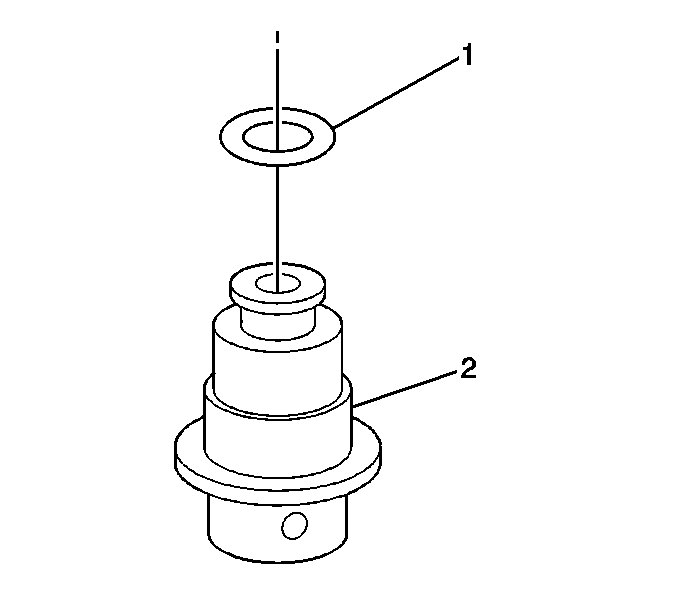
The fuel pressure regulator (2) is contained in the fuel pump module near the fuel pump outlet. The fuel pressure regulator is a diaphragm relief valve. The diaphragm has fuel pressure on one side and regulator spring pressure on the other side. The fuel pressure regulator is not vacuum biased. Fuel pressure is controlled by a pressure balance across the regulator. The fuel system pressure is constant.
Fuel Feed Pipes
The low pressure fuel feed pipe carries fuel from the fuel tank to the high pressure fuel pump. The fuel pipe consists of 3 sections:
| • | The fuel pump fuel feed pipe is located from the top of the fuel tank to the chassis fuel pipe. The fuel pump fuel feed pipe is constructed of multi-layer nylon. |
| • | The chassis fuel pipe is located under the vehicle and connects the fuel pump fuel feed pipe to the fuel feed pipe assembly. The chassis fuel pipe is constructed of steel with a section of multi-layer nylon hose protected by a fiberglass/Kevlar braided covering. |
| • | The fuel feed pipe assembly located in the engine compartment connects the chassis fuel pipe to the high pressure fuel pump. This pipe contains the fuel pulse dampener and the fuel pressure service valve and is constructed of stainless steel. |
The fuel feed intermediate pipe is a high pressure pipe that carries fuel from the high pressure fuel pump to the fuel rail. The fuel feed intermediate pipe is constructed of stainless steel.
Nylon Fuel Pipes
Warning: In order to reduce the risk of fire and personal injury observe the following items:
• Replace all nylon fuel pipes that are nicked, scratched or damaged during installation, do not attempt to repair the sections of the nylon fuel pipes • Do not hammer directly on the fuel harness body clips when installing new fuel pipes. Damage to the nylon pipes may result in a fuel leak. • Always cover nylon vapor pipes with a wet towel before using a torch near them. Also, never expose the vehicle to temperatures higher than 115°C (239°F) for more than one hour, or more than 90°C (194°F) for any extended period. • Apply a few drops of clean engine oil to the male pipe ends before connecting fuel pipe fittings. This will ensure proper reconnection and prevent a possible fuel leak. (During normal operation, the O-rings located in the female connector will swell
and may prevent proper reconnection if not lubricated.)
Nylon pipes are constructed to withstand maximum fuel system pressure, exposure to fuel additives, and changes in temperature.
Nylon fuel pipes are somewhat flexible and can be formed around gradual turns under the vehicle. However, if nylon fuel pipes are forced into sharp bends, the pipes kink and restrict the fuel flow. Also, once exposed to fuel, nylon pipes may become stiffer and are more likely to kink if bent too far. Take special care when working on a vehicle with nylon fuel pipes.
Quick-Connect Fittings
Quick-connect fittings provide a simplified means of installing and connecting fuel system components. The fittings consist of a unique female connector and a compatible male pipe end. O-rings, located inside the female connector, provide the fuel seal. Integral locking tabs inside the female connector hold the fittings together.
High Pressure Fuel Pump
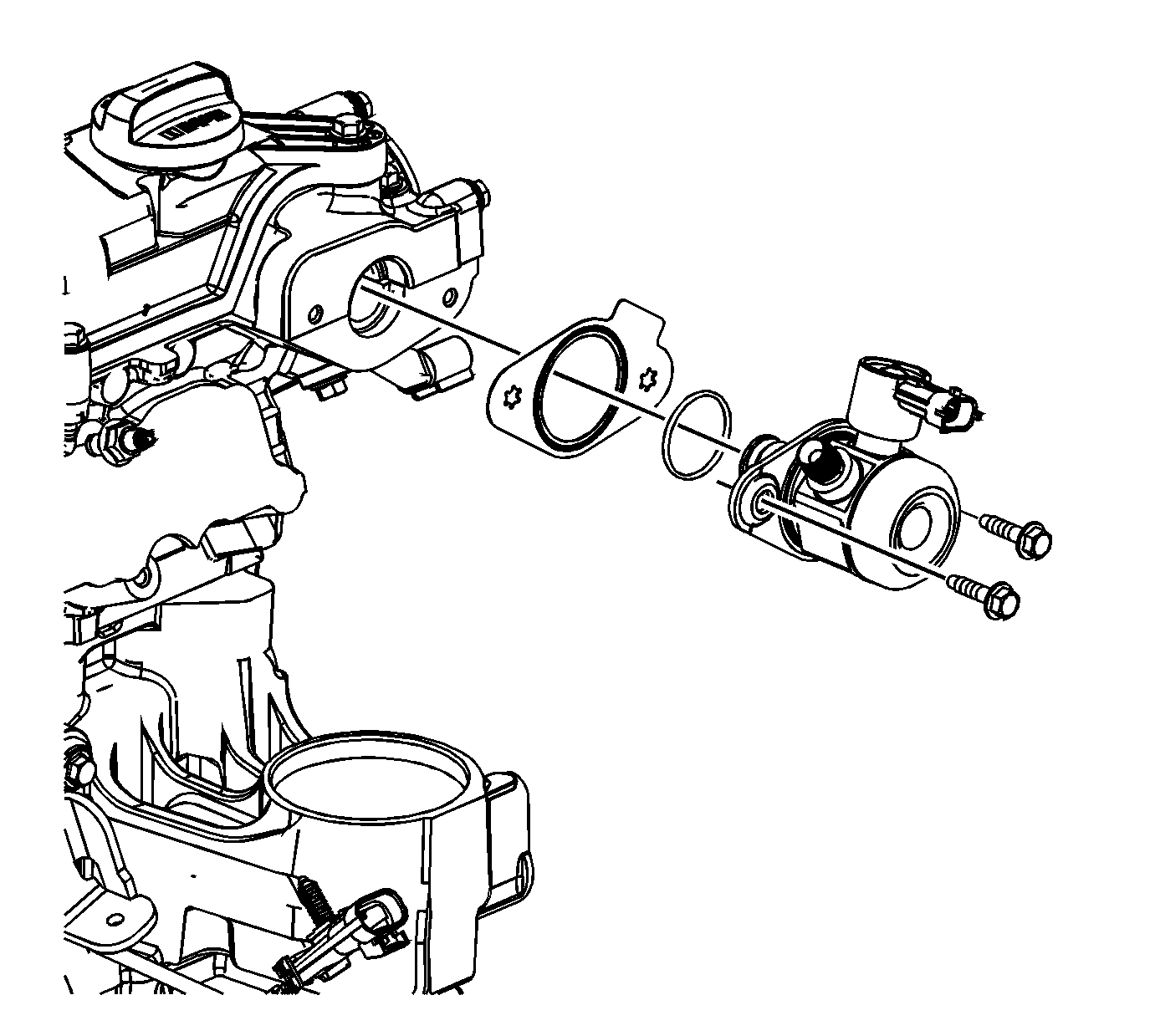
The high pressure fuel pump is a mechanical one cylinder design driven by an additional three lobe cam on the camshaft. High pressure fuel is regulated by the high pressure fuel pump actuator, which is a part of the high pressure fuel pump. The high pressure fuel pump actuator is a magnetic actuator which controls the inlet valve of the high pressure fuel pump. The ECM provides battery voltage on the actuator high control circuit and ground on the actuator low control circuit. Both circuits are controlled through output drivers within the ECM. When deactivated, both drivers are disabled and the inlet valve is held open with spring pressure. When activated, the actuator low control circuit driver connects the low control circuit to ground and the actuator high control circuit driver pulse-width modulates (PWM) the high control circuit. The ECM uses the camshaft and crankshaft position sensor inputs to synchronize the actuator with the position of each of the three camshaft lobes. The ECM regulates fuel pressure by adjusting the portion of each pump stroke that provides fuel to the fuel rail. The high pressure fuel pump also contains an integrated pressure relief valve.
Fuel Rail Assembly
The fuel rail assembly attaches to the cylinder head. The fuel rail distributes high pressure fuel to the fuel injectors. The fuel rail assembly consists of the following components:
| • | The direct fuel injectors |
| • | The fuel rail pressure (FRP) sensor |
Fuel Injectors
The fuel injection system is a high pressure, direct injection, returnless on-demand design. The fuel injectors are mounted in the cylinder head beneath the intake ports and spray fuel directly into the combustion chamber. Direct injection requires high fuel pressure due to the fuel injector's location in the combustion chamber. Fuel pressure must be higher than compression pressure requiring a high pressure fuel pump. The fuel injectors also require more electrical power due to the high fuel pressure. The ECM supplies a separate high voltage supply circuit and a high voltage control circuit for each fuel injector. The injector high voltage supply circuit and the high voltage control circuit are both controlled by the ECM. The ECM energizes each fuel injector by grounding the control circuit. The ECM controls each fuel injector with 65 volts. This is controlled by a boost capacitor in the ECM. During the 65 volt boost phase, the capacitor is discharged through an injector, allowing for initial injector opening. The injector is then held open with 12 volts.
The fuel injector assembly is an inside opening electrical magnetic injector. The injector has six precision machined holes that generate a cone shaped oval spray pattern. The fuel injector has a slim extended tip in order to allow a sufficient cooling jacket in the cylinder head.
Fuel Injection Fuel Rail Fuel Pressure Sensor
The fuel rail pressure sensor detects fuel pressure within the fuel rail. The engine control module (ECM) provides a 5 volt reference voltage on the 5 volt reference circuit and ground on the reference ground circuit. The ECM receives a varying signal voltage on the signal circuit. The ECM monitors the voltage on the FRP sensor circuits. When the fuel pressure is high, the signal voltage is high. When the fuel pressure is low, the signal voltage is low.
Fuel Pulse Dampener
The fuel pulse dampener is a part of the low pressure fuel feed pipe assembly. The fuel pulse dampener is diaphragm-operated, with fuel pump pressure on one side and with spring pressure on the other side. The function of the dampener is to dampen the fuel pump pressure pulsations.
